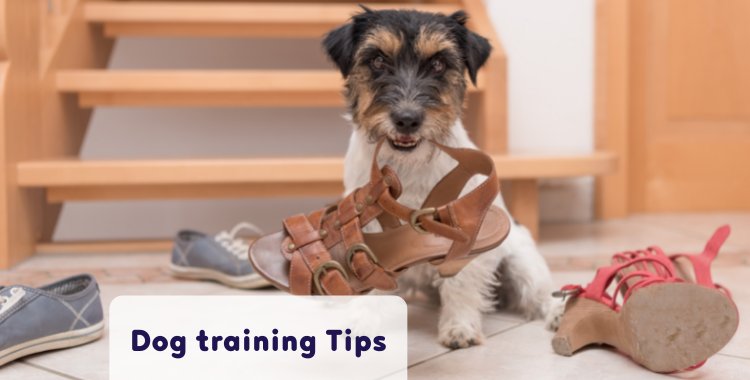
If there’s one thing on this Earth that can be described as a labour of love, it’s training an adolescent dog. Naturally, there are many ways to train a dog, however, we find that the best way is with treats and toys; this is also known as “reward based training” where you reward your pet when they follow a correct instruction or do as they’re told. But that’s big stuff, what about the small stuff like chewing and barking? Well, if you’re already this far you should know by now that you’ve come to the right place. Read on and we’ll share with you some of the best tips for dealing with a junior forever-friend!
Essential Items and Must Haves:
You’ll need a few essential items to help you on your way. The first things we recommend getting are a dog crate and a comfy, you-smelling blanket. The crate will give your dog a place to rest and an area to call their own, while the blanket will keep them warm and allow him/her to familiarise your scent with safety. Next, you’ll need a toy or enriching treat that will keep your dog’s mind off of misbehaving. At this early stage, food isn’t really a concern. You can keep feeding your new friend whatever your Reputable Breeder or Adoption Centre was feeding them, though if you wish, you can change over gradually at a later date. Also, stock up on plenty of newspaper because that’s what you’ll be using in the downtime from toilet training! Finally, our own Pet Health Plans are ideal for any accidents that happen when your pup is figuring out their place in the world. From as little as €23 a month, you’ll receive free visits to all of our clinics, annual booster vaccinations, annual urine and blood tests, 10% off neutering and 20% off all Royal Canin Diets!

Biting and Chewing:
At this early stage in your new friend’s life, they are more inclined to chew and bite on whatever they can fit in their mouth – this can be a problem for working pet parents. Your pet’s biting and chewing can also extend to you, your family and visitors to the home; playful biting, of course. As we mentioned above, we recommend getting an assortment of durable chew toys that will take your pet’s attention away from the things they’d actually like to chew. When it comes to munching on fingers you’ll have to take a firmer approach (as much as it might pain you to do so). It’s important for your pet’s development that you do take this firmer approach, but never an aggressive or frightening one. Avoid raising your voice and speak in an authoritative manner; you’ll find that your pet knows they’re in the wrong and will stop doing whatever it was that got you to speak to them in that tone. Honestly, it’s really simple; just repeat until the issue resolves itself. You’ll still be the best of friends afterwards!
Barking:
Many pet parents to adolescent dogs will find that they bark for (seemingly) no reason, but in reality there can be a whole host of worries on your dog’s mind. Being separated from their owner for even short amounts of time can make your dog bark endlessly, as well as them perceiving a threat outside the house that’s not really there. This barking can even extend to visitors to your home. Again, it’s important to take a firm but fair approach with your pet.
There’s no sure-fire cure for endless barking, only your own persistence can abate it. As an aside, you can always leash them and bring them outside for a time out if they keep being bold :)
So, we hope we’ve covered the basics on biting and barking. If there’s anything we’ve forgotten or tips we may have left out, you can always get us on one of the many contact options available here.
For now pet-pals we say farewell!





